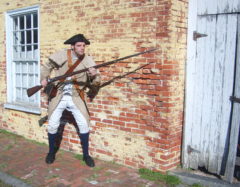Although there are myriad theories associated with the study of AMERICAN TRANSCENDENTALISM, two of the most prevalent theories used to generate knowledge in the field focus on apparent contradictions found in transcendental writings and the transcendental period’s existence as it relates to the past, present, and future. Typically, both of these studies center on the two most illustrious writers of the time, RALPH WALDO EMERSON and HENRY DAVID THOREAU. Using the political and philosophical writings of these two men, along with records of their political oratories, these objects of study are paramount in order to emphasize and extend theoretical frameworks. While using these objects of study to generate knowledge, various stances have been established among critics, trends have been identified, and connections to American literature’s history have become evident.
Studies of the transcendental period ebb and flow, for there have been times in history where transcendental criticism has been conspicuously absent and other moments where numerous studies have been conducted. Joe B. Fulton notes that there have always been informed discussions about transcendentalism’s influence ever since the TRANSCENDENTAL CLUB’S first meeting in 1836 (383). However, as Gregory Paine indicates, the magnitude of transcendental studies is not always abundant, and the area of study begins to excel after WWI (631). Of course, this is not surprising, considering that all studies in American literature also exploded after the war. One valuable study, conducted by F.O. Matthiessen in 1941, helped shape the theoretical framework of transcendental criticism. When researching Thoreau’s writings, which became a source of “critical bemusement and controversy in America since interest in them revived” early in the twentieth century, Matthiessen reflected on the writings’ contradictions and causal relationship to the past (St. Jean 341). In his work, Matthiessen mentioned, but blatantly avoided, in-depth analysis of Thoreau’s paradoxes of social thought; however, this avoidance instigated a range of responses and studies. “Later critics have been less gun-shy, but Matthiessen’s crisp assessment of Thoreau’s incongruity has defined a central point of contention among their analysis of the work that comprises Thoreau’s political canon” (St. Jean 341).

While studying Thoreau’s works, a majority of scholars have accepted and advanced a theory articulating Thoreau’s contradictions; for example, even his individual works have been labeled as a “tissue of self-contradiction” (St. Jean). This more authoritative view seems to make sense, for as Gregory Paine concedes, ignorance abounds because there are so many fascinating paradoxes about Thoreau, not just in his writings, but the man, too (632). Meanwhile, on the other end of the spectrum, critics like St. Jean feel like a majority of scholars prefer to call Thoreau inconsistent rather than focusing on how he maintains his overall philosophies while adjusting to certain scenarios (350). Nevertheless, Thoreau is not the only writer of the time period whose work is analyzed to identify apparent contradictions, for Emerson can often be evaluated in the same manner, and even the whole concept of transcendentalism can be hazy at times. For instance, one critic, Professor Gohdes, presented his analyses of transcendental principles, but he was confused by the numerous definitions of the movement; therefore, he articulated that transcendentalism was not primarily a philosophy or a reform, just a spiritual attitude and new school of thought that emphasized leaders and activities (Paine 639-40). Gohdes, like numerous other scholars, contemplates the transcendental period’s existence as it relates to the past, present, and future.
Attempting to define transcendentalism and its philosophies is the other paramount focus of study worth noting; the theories associated with whether transcendentalism mimics the past or whether it is its own novel entity help contribute to the field of study as a whole. Looking back at Matthiessen, he theorized that the New England philosophical movement produced its own renaissance (Fulton 384). However, this theory is the antithesis of what a majority of critics endorse; in fact, the more authoritative approach is that transcendentalism sparked a rebirth of the European Reformation and Renaissance (Fulton 390). Even though this stance takes precedence among critics, other scholars identify the transcendental movement as a revolt against Lockean Philosophy, a revolution against American values, or a mystical evolution (Pendery 53).

Essentially, some scholars look deeper into other cultures of the past in order to theorize about American transcendentalism, some look at solely American influences, such as the Puritans, some focus specifically on the time period when the transcendentalist thinkers thrived, and others examine and compare future resurgences that took place after transcendental principles dissipated. Identifying how the New England movement impacted future renaissances has been most commonly studied in the last decade; for example, some critics value MARGARET FULLER’S contributions to the transcendental movement as essential precursors to the Feminist movement (Miller 102). Meanwhile, David Pendery has analyzed the connections between the transcendentalism’s initial “American Renaissance” and the twentieth-century “Nashville Agrarian Southern Renaissance” (41). As indicated, the theories and methods utilized to generate knowledge in the field of American transcendental studies may vary; however, they have generated authoritative trends, reflected on a variety of histories, and have continuously scoped Emerson and Thoreau’s works as the primary objects of study.
Works Cited
Fulton, Joe B. “Reason for Renaissance: The Rhetoric of Reformation and Rebirth in the Age of Transcendentalism.” The New England Quarterly 80.3 (2007): 383-407. JSTOR. Web. 21 October 2016.
Miller, Thomas P. The Evolution of College English: Literacy Studies from the Puritans to the Postmoderns. Pittsburgh: University of Pittsburgh Press, 2011. Print.
Paine, Gregory. “Trends in American Literary Scholarship with Reviews of Some Recent Books.” Studies in Philology 29.4 (1932): 630-43. JSTOR. Web. 28 October 2016.
Pendery, David. “A Comparative Study of Two American Cultural Renaissances.” Fu Jen Studies: Literature & Linguistics 47 (2014): 39-60. Gale: Literature Resource Center. Web. 28 October 2016.
St. Jean, Shawn. “Thoreau’s Radical Consistency.” Massachusetts Review 39.3 (1998): 341-57. JSTOR. Web. 24 October 2016.
